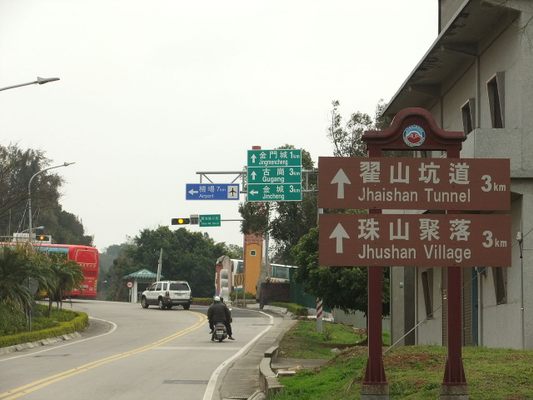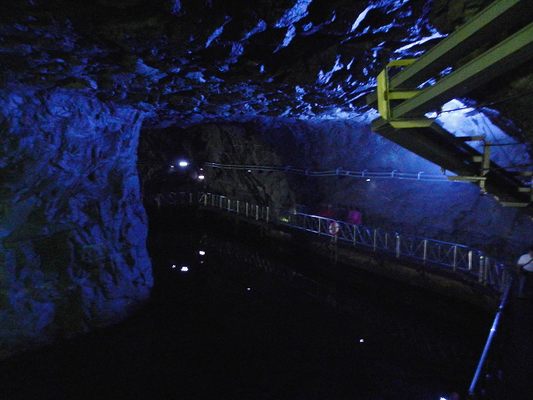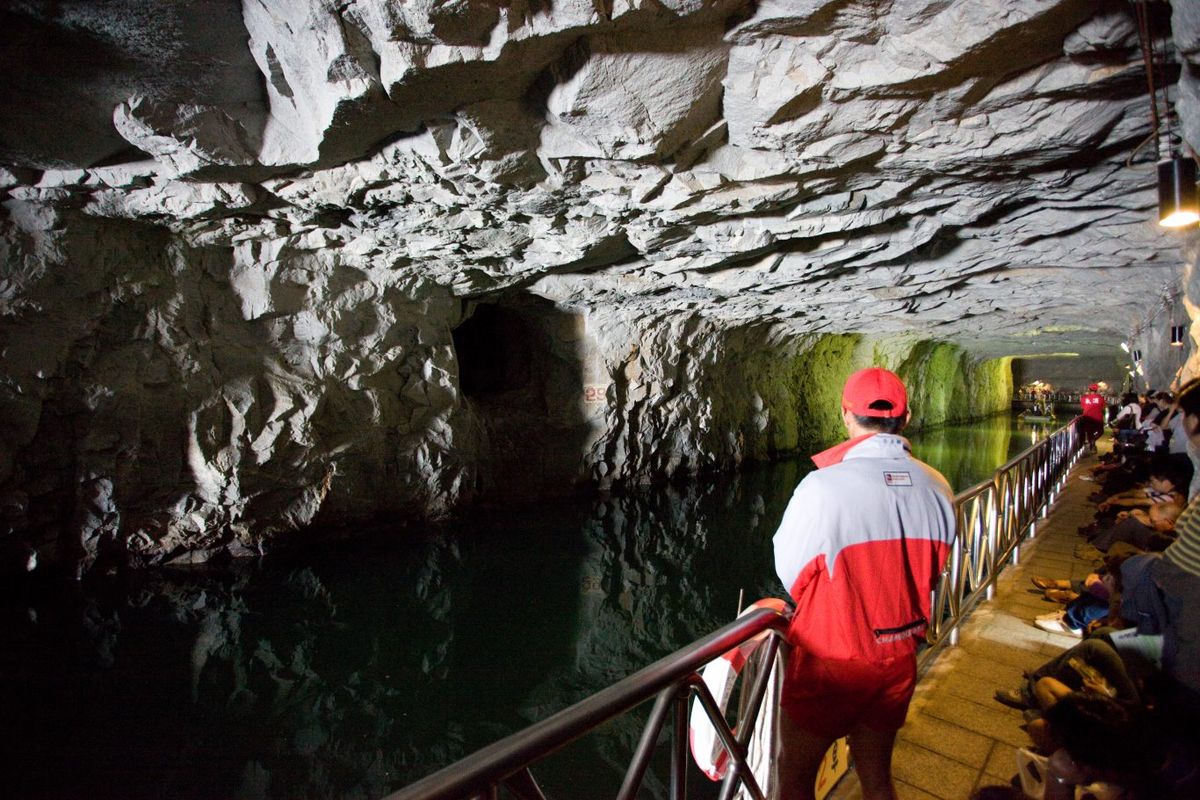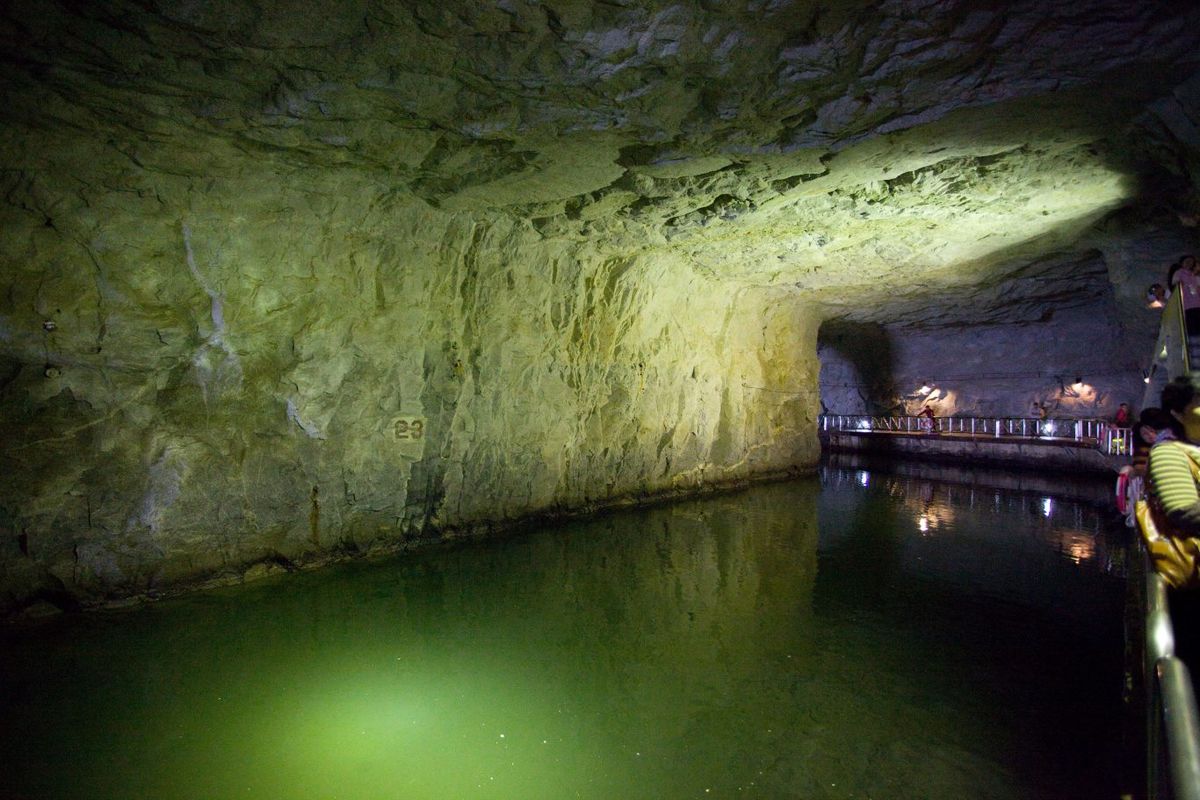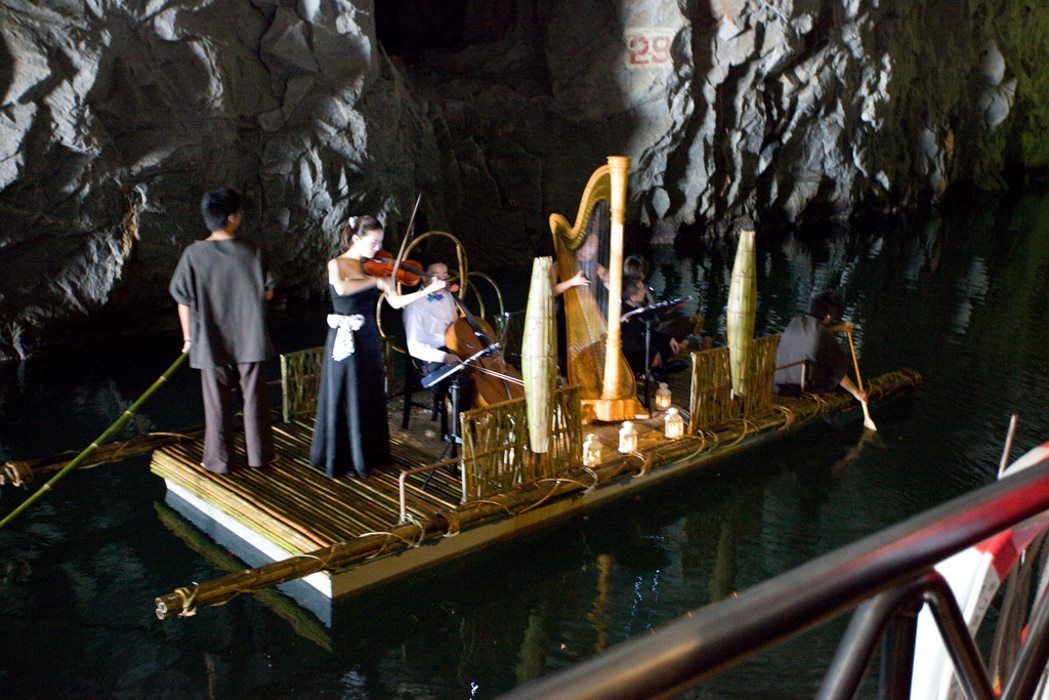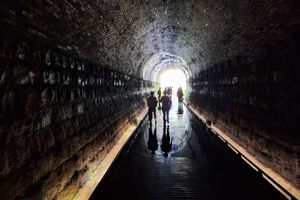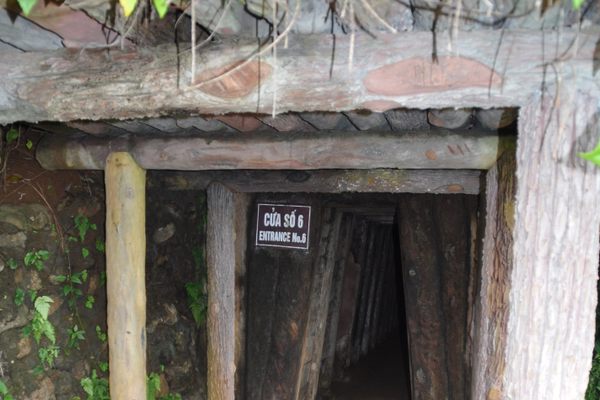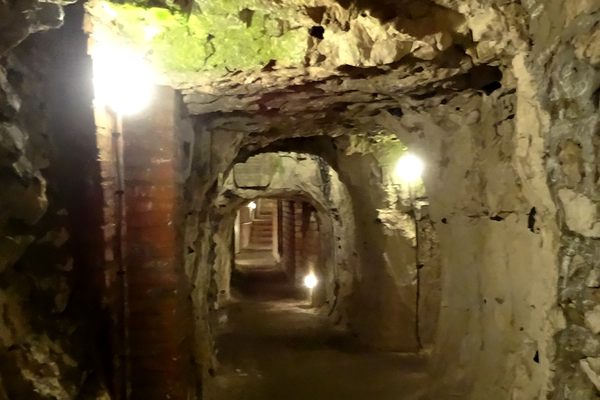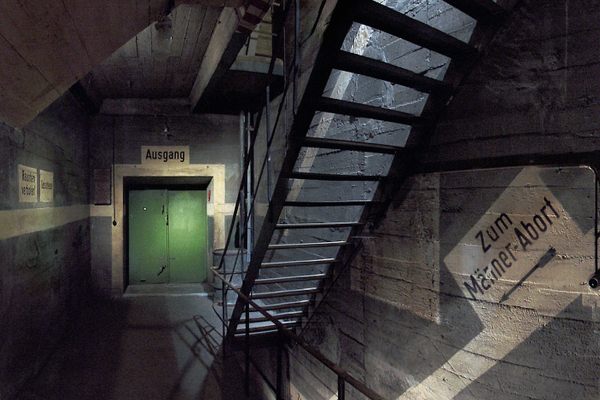About
Following the Second Taiwan Strait Crisis in 1958, tensions between the People's Republic of China (PRC) and the Republic of China (ROC, now known more commonly as Taiwan) were at breaking point. The Taiwanese island of Kinmen, just a few miles from the mainland, had been shelled relentlessly during the four-week crisis, and a Cold War lingered between the two factions.
Faced with potentially devastating artillery bombardments from the hostile Chinese mainland, President Chiang Kai-shek of Taiwan ordered the construction of underground fortifications in the hard granite of Greater Kinmen, a strategically important island just off the coastline. This included the Jhaishan Tunnel, an incredible system of underground tunnels and waterways stretching for 1,500 feet.
The Jhaishan Tunnel (sometimes Zhaishan Tunnel) was completed in 1966, comprised of two interconnecting A-shaped tunnels. One was an underground waterway built to help protect boats from bombardment and allow for the safe unloading of cargo. At high tide, the tunnel allowed the relatively safe transport of supplies, providing invaluable protection from artillery attack if necessary. In total, the tunnel could shelter 42 small naval vessels.
As the Cold War gradually faded, Taiwan went through a period of reform and social change, part of its often troubled passage from authoritarianism to democracy. The Jhaishan Tunnel, meanwhile, was slowly filling up with sand. Lacking both the money and manpower to maintain the tunnel, it was abandoned in 1986.
In the mid-1990s, an increased interest in preserving national historic sites and, more locally, remembering the men and women who fought for Kinmen, turned the spotlight back onto the Jhaishan Tunnel. It was handed over to the Kinmen National Park to be restored and preserved. There was one caveat however: The Ministry of Defense would always be granted full access and control over the tunnel in times of war and for conducting military exercises.
Alongside its current role as tourist attraction, national historic site and potential wartime boat shelter, the Jhaishan Tunnel also serves as a concert hall. As part of the Guningtou Peace Concert in 2009, a concert was held inside the tunnel. It was a huge success, as were the acoustics inside the tunnel, which turned out to be almost perfect. And so was born the annual Tunnel Music Festival, with classical music concerts and operas performed inside Jhaishan at least once every year, with musicians and singers often performing from boats floating on the covered waterway.
Related Tags
Know Before You Go
The tunnel is open to visitors from 8:30 a.m. to 5 p.m. daily.
Community Contributors
Added By
Published
February 16, 2018
Sources
- https://books.google.com.pe/books?id=_rBTDAAAQBAJ&lpg=PT127&dq=Jhaishan%20Tunnel%20map&pg=PT127#v=onepage&q&f=false
- http://www.kmnp.gov.tw/en/index.php?option=com_content&view=article&id=52&Itemid=75
- https://www.cpami.gov.tw/news/press-release/20186-a-gala-concert-of-history-kinmen-tunnel-music-festival-2016.html



